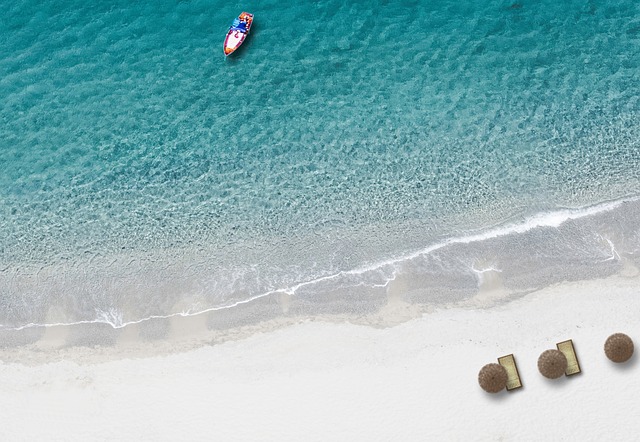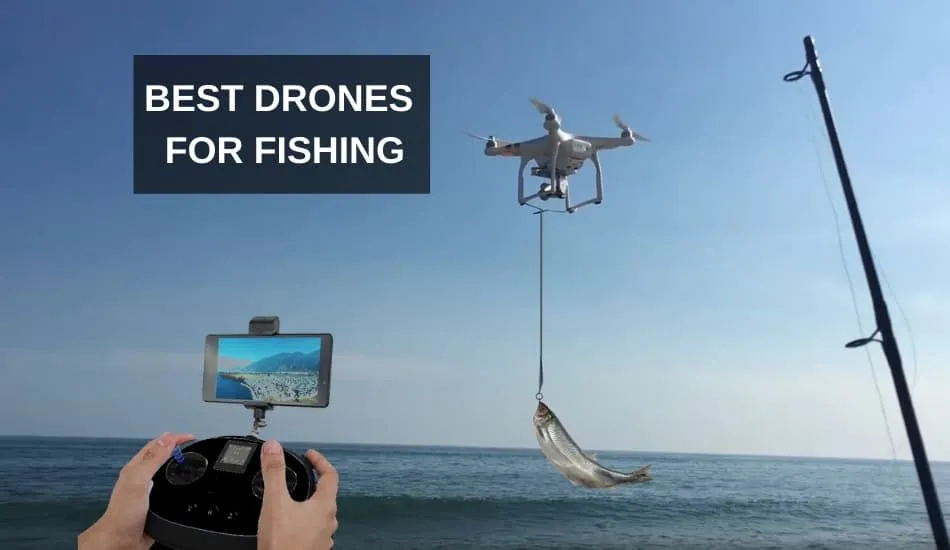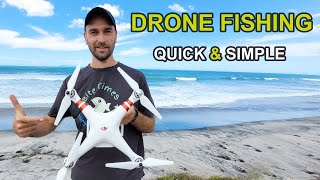
If you are an avid fisherman and live in Australia, you can now use a drone to get an aerial view of the waters around your property. Drones come with various features like a mechanical payload release, an angle adjustable camera, GPS positioning system, and a GPS receiver. You can also purchase fishing lines, which are stable and safe. One such example is the SKY RIGGER drone.
The drone fishing line SKY RIGGER can be used for spotting fish.
The SKY RIGGER fishing line system for drones allows you fly fish and is flexible. It has two rotating leg clamps, which can be mounted to many drone models. The release mechanism uses a bayonet connection and a camlock arm. This allows for quick opening of the line clamps. Unlike other drones, the Sky RIGGER requires no batteries and can accommodate all fishing techniques safely.
The SKY RIGGER's automatic release mechanism allows for the release of the fly when a fish strikes it. You can also release the line manually with your hand or rod. This feature can be found on all models. It is recommended that you purchase a Phantom 3 before purchasing the new SKY RIGGER. The following are some pros and con's of the new line:
It is equipped with a mechanical payload transfer
A good drone's mechanical payload release is one of its most important characteristics. Many of them make it possible for the anglers easy to release the fishing lines. Some models have no release mechanism. Instead, the user must "yank" the fishing line to release the drone from the line. This can be a tedious process, especially for those who don't feel comfortable using their hands to release it.

The payload release mechanism is another important feature. The drone should have the ability to release its payload when it strikes a fish. This method is not easy to use. You can't just pull the fish up and let it go. Many people have had good experiences with the DJI Phantom drone. However, this technology is not yet comparable to other fishing drones.
It comes with a GPS location system
Rippton is a joint venture of Australia and Holland that specializes exclusively in technology-oriented fishing gear. It was established to help anglers improve their success rates and create products that will enhance the enjoyment of fishing. Rippton's Mobula drone includes a GPS positioning and remote release. The Mobula has the ability to hold bait at surface, provide resistance for kite clips, as well as being environmentally friendly.
It is lightweight and weighs just 3 lbs. It can fly for up 18 minutes. The GPS system is high-tech and allows for control from as far away as 2,000 miles. It can fly for up to 1000m, which is half a mile. The point of interest feature allows it to take high-quality photos of its surroundings. The camera's high resolution allows for great views of fish.
It comes with a failsafe feature
The Aerokontiki fisherman drone comes with a failsafe feature: it monitors the battery level and releases the fishing line when needed. If the battery is dead, the drone will automatically return to dry ground and resume its mission. It uses industrial-grade flight controllers and can operate anywhere without recalibration. You can use this drone even in very difficult water conditions.

FAQ
How do you travel with a drone?
Drones are increasingly becoming popular both for personal and commercial use. They can be used for photography, filming and aerial mapping. New regulations were approved by the FAA, which includes requirements for registration, licensing pilot training and insurance. These changes will help ensure that drones stay safe for all.
How high can you fly a drone without a license?
The FAA doesn't limit how high you can fly your drone. They do require that you register your unmanned airplane system (UAS), which includes registration number, model number, weight, size and manufacturer's names, as well as other information.
What US states have drones made legal?
Legally, you can operate a drone to perform hobby tasks. The Federal Aviation Administration (FAA) has set up guidelines that allow people to use small unmanned aircraft systems (UASs). These UASs must be registered with the FAA before they can be flown. The FAA also allows commercial operators to fly these devices if certain conditions are met.
Statistics
- According to industry research from ZipRecruiter , there are 10 cities where the typical salary for a Drone Pilot job is above the national average. (dronesgator.com)
- According to ZipRecruiter, the minimum hourly wage of drone pilots is $20. (thedroneu.com)
- With the top 10% making over $100/h and the bottom 10% making as low as $10/h. (dronesgator.com)
External Links
How To
How To Fly Drones For Beginners
A drone can be used to fly remotely controlled aircraft for photography, surveillance, scientific research, hobby and commercial purposes. Drone technology has been around since World War II. DJI introduced their Phantom series of quadcopters in 2010, but commercial use only began in 2010. There have been many types of drones since then, including beginner-friendly drones like the Parrot AR Drone 2.0 and professional-grade multi-rotor crafts like the DJI Mavic Pro.
There are many methods to fly a Drone, including
-
Remote control – This is when you attach a device to your hand that allows you to control the drone's flight path. There are two main types: Joysticks (like a radio), and On/Off switches (like an alarm clock).
-
Manual Control – This allows remote operation of the drone via GPS coordinates using a smartphone application. Follow the instructions of the app to track the exact location you want the drone go.
-
Autonomous Flying - This allows the drone to take over all of the piloting duties. It is basically flying autonomously and without human intervention. To enable autonomous flight, the drone should have a built in camera and sensors capable recording images and data.
-
Triggered Flight: This is similar in concept to manual control. The pilot manually creates a route and the drone then follows it until it reaches that endpoint. The drone automatically lands once the route has been completed and returns to the base.
-
Landing Gear: Some drones have landing gear that allows them safely to land in case they lose power or run low on battery.
-
Goggles - Some pilots wear goggles to protect themselves from debris while operating.
-
Camera - Certain drones come with cameras that allow you to take photos and videos from high above.
-
Obstacles - Some drones can be equipped with obstacle avoidance systems that prevent them from crashing into obstacles.
-
Speed - Drones can reach speeds up to 40 mph.
-
Battery Life - Most drones are capable of lasting between 20 minutes and three hours, depending on the power that you use.
-
Some drones have a range of up to 30 miles, depending on their model.
-
Power source – Some drones require external power sources, others require internal batteries.
-
Weight – Some drones are less than one pound, while other models can be up to four pounds.
-
Size - Drones come in many sizes, from small gadgets that fit in one's hands to large craft that weigh more than 50 lbs.
-
Price – All drones fall into a price category. These range from expensive models that cost thousands to affordable options that start at 100 dollars.